Why David Bowie Still Matters
September 7, 2012 by Mike Czech
I start this section off by saying that I have been a fan of music since I was a child listening to my parents’ vinyl collection and songs on the radio whenever we drove around town. I remember The Beatles, The Beach Boys, The Carpenters, and The Bee Gees (before they got popular in the late 1970’s Disco period). It wasn’t until I heard The Jackson 5’s Greatest Hits, a record my mom brought home from the department store, when I started to groove. I started to sing along to Michael Jackson’s melodic voice and copy his dance moves which I saw on TV. This lead to listening to Disco music and getting into the grooves of Sister Sledge (“We are Family”), Chic (“Freak Out”), Donna Summer (“Last Dance” and one of my first major crushes), and The Bee Gees (the disco Saturday Night Fever vibes). But, it wasn’t until I heard Kiss for the first time that I understood that I needed to play guitar. Their hard rock guitars and loud vocals stirred something inside of me and after hearing their album, Love Gun, I wanted to be Paul Stanley and paint my face like him with a star over my right eye and form a rock band. I left Disco and never looked back.
I stayed in the hard rock genre and listened to all kinds of bands after my infatuation with Kiss wore off. Bands like Aerosmith, Queen, AC/DC, Nazareth, Scorpions, Ozzy Osbourne (solo with Randy Rhoads), Van Halen (before they became Van Hagar), Rush, and Def Leppard all made their way onto my turntable. I would listen to them constantly alone in my bedroom and try to understand the lyrics that I read off the insert that I pulled out of the cardboard record sleeve. As I entered high school, I started to meet other guys who liked similar bands and we would start to listen to music together. By my sophomore year, I had formed a clique of likeminded guys who liked these hard rock bands but were now starting to explore heavy metal, mainly the New Wave of British Heavy Metal bands like Iron Maiden, Saxon, and Motorhead (though Motorhead had been around a long time before this early 80’s metal wave hit). This clique was not really a subculture in the sense that we felt alienated from the dominant culture because we were the dominant culture. All of us were white male heterosexual middle class kids living in the suburbs of Canton, Ohio. We all went to the mall and hung out and grew up playing little league baseball and football together. But, as sophomores, we started to talk about cars since some of our clique got their driver’s licenses and since the hormones had kicked in, we started talking about girls.
Because I started school earlier than everyone in my clique, I did not have my license and was not really into cars since I didn’t think about having to buy one. I was more into music and buying records and cassettes from the money I got being a paper boy. I thought about playing electric guitar and got good enough to join my first band, Zero. The band had just kicked out their rhythm guitarist and needed another one and I auditioned and was excited to get the gig. These guys were my age and went to my high school but were not part of my clique, as they would have been considered the “burnouts,” which, to me, is a subculture, sort of like the lads that Paul Willis talks about in Learning to Labor (1977). They were in a lower socioeconomic class than me, were not going to college, and showed their alienation symbolically through the rituals of drinking and smoking a lot of weed and showing their style by listening to heavy metal music (which I had a commonality with), wearing ripped up jeans with the big leather biker wallet sticking out of the back pocket with the chain attached to it, and leather jackets and cut-off jean vests with all kinds of patches of heavy metal bands and pictures of the lone marijuana leaf on them. Most of my clique wore non-wrinkled jeans without rips or stain, button down shirts, and the high school jacket that had the school symbol on it as well as any letters we got from playing sports.
I played in Zero for a semester before the band broke up for good and I got my first taste of playing music in a live setting, which was a rush, almost as good as having sex for the first time, which happened not much later after the band broke up. One gig I remember had us lip syncing some original songs on stage while being filmed for this teen dance show that was locally produced and shown on the local TV station. It was sort of like American Band Stand and local bands got to share their music and play on this show while kids were shown dancing to their songs coming out of the large speaker system. After we “played” our two songs, I remember standing to the side of the dance floor and watching the kids dance to songs that were popular at that time, which was in 1983, and hearing cuts from Prince’s 1999, Michael Jackson’s Thriller, and ZZ-Top’s Eliminator albums coming out the sound system. And then something weird happened. A song came on and when I heard it, I couldn’t stop listening because it was doing something to me physically. The bass and drums were tight, but had this booming quality that went through me in a natural way sort of like it had done it before, though I had never heard this song. And the melody lines that were being played over the chords hit me, too, in a way that felt “right.” But, it was the singer’s voice that hit me the hardest. I listened to him sing and the timbre and pitch of his voice and the way he emoted his words was very intriguing. I hadn’t heard anyone sing like this before, though I thought I recognized something in his voice that I might have felt or experienced before. I stood there and listened and when the song was over I asked one of my bandmates who we had just heard. He didn’t know. So, I forgot about it and just went on doing what high school kids did in Canton, Ohio in 1983.
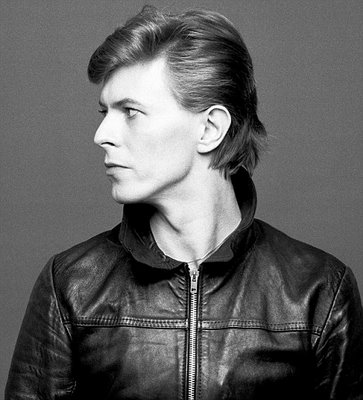
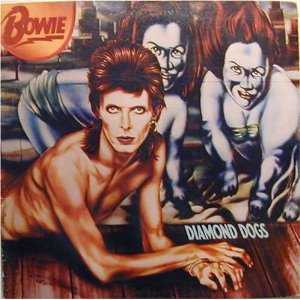
Well, I found out the name of the song the following summer and bought the cassette of the album on which the song appeared. The song was David Bowie’s “Let’s Dance” with the title of the album having the same name. I had engaged in what Grayck (2001) calls disinterested listening back when I first heard this song watching the kids dance to it because I felt the rhythmic groove as well as heard the melody lines of the music and the dynamics of Bowie’s voice. I had not really listened to the lyrics and was about to analyze it because I was flowing with it every time I heard it on the radio after my initial listening. Perhaps I was having a surface philosophical encounter with the music as Surber (2009) discusses since I felt the music’s trajectories and intensities and flows via a pre Dionysian/Apollonian experience. I talked about feeling something natural when I heard it and felt like I was in it feeling it and moving around in the rhythms and sounds. I came to find out that the album was produced by Nile Rodgers with Tony Thompson playing drums, which I found interesting because both of those guys were in Chic, the disco band I loved and listened to back in the day. Perhaps I had understood their groove before and might have had a surface reaction to it back before I understood the passion/rational binary that seemed to split music into low and high pop culture. But, what explains my reaction to Bowie’s voice? I was totally moved and felt like it was something familiar though I had never heard anything like it. Sanford (1998) talks about Bowie’s “gravely voice” (p. 221) on this album but I heard it more like a deep crooner who was versatile in hitting different ranges and dynamics when the mood called for it. Nevertheless, I started to move into interested listening (Grayck, 2001) concerning Bowie and went out and started to buy his back catalog since, as Buckley (2004) says, “On July 16 [1983] Bowie had a staggering ten albums in the UK Top 100 album chart, as throngs of new admirers snapped up his illustrious back catalogue which had been re-released by RCA at a special-offer price” (p. 62). I was one of those new admirers and I remember going to the record store and being happy that his 1970’s albums were on sale. I also remember this is when the trouble started.
I remember thinking about David Bowie as being “weird” since I saw him on TV in the 1970’s wearing colorful clothing and makeup and I remember someone saying that he was gay. But as I started to go back and listen to his music, these thoughts were not at the forefront of my mind just yet because I had to get used to some of the music I was hearing. I remember listening to the song “Aladdin Sane” from the 1973 album of the same name and not understanding the dissonant piano playing of Mike Garson. I was used to hearing Randy Rhoads play classical riffs in the heavy metal vein with golden harmonies and form and balanced song structure that would have probably caught Plato’s ear, though I do not think he would have liked it for long. But, I understood consonance in music and to hear this dissonance was very new to me. I came to find out later that song “Aladdin Sane” was a play on words for “a lad insane” and Bowie was trying to emote his stressed, cocaine-fueled mental state from touring as Ziggy Stardust and inhabiting this character, a mixture of space alien/androgynous rock god, and not being able to come back to reality and his “normal” life. I also found out that in 1972, the year he released his Ziggy Stardust and the Spiders from Mars album and one year after he released his Hunky Dory album, the one with Ch-ch-changes on it, in an interview with Melody Maker, a British music magazine, Bowie said that he was gay (Pegg, 2004; Thompson, 2010). No one had ever done this before in popular music and looking back, Bowie would say that it was the 1970’s and that it was the time of excess and experimentation and he felt that it was ok to say it, though by the conservative 1980’s he would renounce ever being gay and say that he was openly heterosexual (Sanford, 1998; Spitz, 2009). Another reason Bowie said that he was able to say provocative things and do provocative stage shows was because he had created a character that he could hide behind in trying to push the boundaries since he did not feel confident enough as a musician and performer to be able to do it without wearing a mask to feel safe (Thompson, 2010, 2006; Trynka, 2011). Gracyk (2001) says a similar thing in the sense of the interested listener being able to explore new subject positions by realizing that one's “plasticity of identity” opens space to “…celebrate artists whose musical performances are unlikely to be taken as authentic expressions of the singer” (p. 216). So, by listening to Bowie and engaging with his different characters that he created on each subsequent album from 1971’s Hunky Dory up to 1983’s Let’s Dance, I was able to explore and think about new identities and subject positions because I felt safe doing it by listening to someone who I knew was probably not as far out as these albums claimed he was. It was only when I started to talk about Bowie with my clique that I felt unsafe.
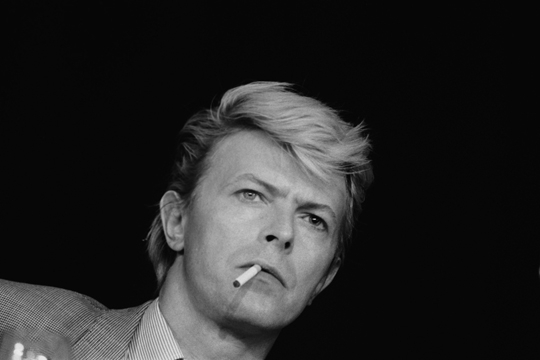
I started to talk about Bowie the next fall semester when I was a junior and right away many of the guys said that Bowie was a “fag” and that “only fags listen to him.” Well, they started calling me a fag even though they knew I had a girlfriend who they would rag me about since I was with her all the time and not “hanging out with the guys” and riding around in the car “looking for babes” and listening to heavy metal music. When I started to wear different clothes and style my hair like Bowie did in the mid-1980’s, my clique pretty much disowned me. Spitz (2009) talks about applying Sun-In to his hair to make it lighter after hearing Let’s Dance and liking Bowie’s look of a tanned, blonde sun god. I, too, liked his look, and put this hair dye in my hair to make the front part, which I grew longer into a swoop, sort of like the guy from a Flock of Seagulls but not as radical, have some blonde streaks in it. Well, since my hair was dark brown back then, the Sun-In turned it a weird orange instead of the desired blonde that Bowie had and I looked a little different. Once my clique saw this, I was called “Boy George” or whatever feminine name they could think of. By winter break I was pretty much kicked out of the clique because I had gotten in a fight with a guy over, and I find this ironic, spending too much time with my girlfriend and not enough time with them.
Looking back, I see listening to Bowie and actually changing my appearance to look more feminine in homage to him as courageous acts because they went against the norm and risked the chance that I would be alienated from the group. I didn’t do this as an ideological stance against conformity yet, but I was on my way to realizing that it was OK to try something different. But, the toll it took on my psyche was intense. I was completely alone that winter break. Yes, I had my girlfriend, but it was different than feeling like I did not have a group of friends to hang out with and for the first time I had to rely on myself and be alone with myself and be comfortable with it. The good thing was that Bowie was there to keep me company. I remember listening to two of his albums constantly that break during long solitary walks in the stillness and insane cold that only a Northern Ohio winter can produce. Those albums were Hunky Dory (1971) and Low (1977). Ironically, both of those albums were pivotal and
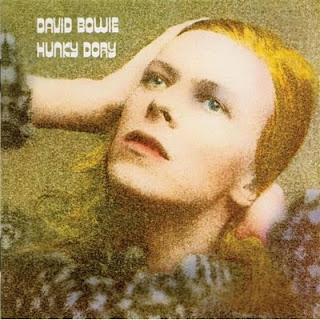
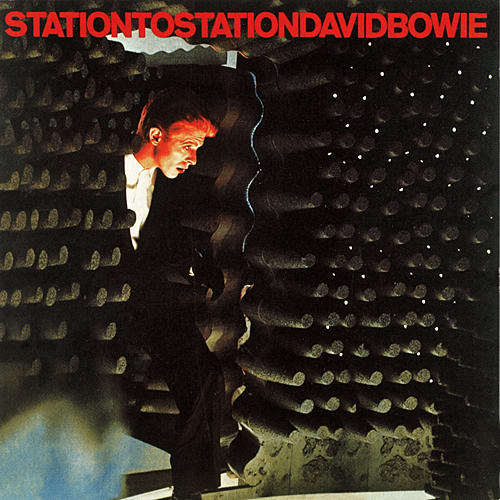
Hunky Dory has been described as “…the most openly “gay” album Bowie had yet recorded (Pegg, 2004, p. 270) where he “took themes like anarchy, bedlam and sexual ambiguity and made hit singles of them” (Sanford, 1998, p. 62). Wilken (2005) claims that Low has been seen as a masterpiece since Bowie brought a completely new sound into popular music that blended machines like synthesizers and electronic drums with human emotion, though not all of this emotion was considered harmonious. Perone (2007) gives his thoughts on Low by saying:
The psychological states that Bowie explores through the album’s characters are, frankly, disturbing. Somehow, though, through a mix of focus on detachment, repressed emotions, and self-centeredness, it all works as a whole, despite the extremely wide range of musical styles. (p. 64-65)
Furthermore, both Hunky Dory and Low used different techniques of ripping apart language and reassembling it, which went against a standard linear way of writing. Bowie used the cut-up technique on Hunky Dory where he would cut up sentences from his diary and then rearrange them in various orders to achieve different effects. On Low, he used producer Brian Eno’s set of Oblique Strategy cards, which Buckley (2004) says:
…formed a sort of musical tarot (“over one hundred musical dilemma” according to the authors) and contained directives on how to work in the studio such as “Listen to the quiet voice,” “Fill every beat with something,” Emphasize the flaws,” Mute and continue” and “Use an unacceptable color.” Eno urged Bowie to experiment and to think in nonlinear ways about the recoding process, and he went on to develop this new approach throughout the rest of the decade (p. 45).
So, with this in mind, I look at my foray into listening to Bowie and leaving the group of friends I had been privy to for years, as moving from a linear/accepted/normative path in life to one where I start to see the nonlinearity, the differences in life and how minority voices get marginalized and silenced. To be called gay and made fun of was like being on another planet after being used to being in a comfortable home for most of my life. To be alone and to survive it, I came back stronger and started to use my agency in making a new group of friends based on similar tastes in music. I realized that it was OK to be different and that the world would not end. As my listening experience with Bowie opened my mind, I started to crave listening to new bands and went back and listened to past bands like The Doors to learn about different ways of writing music as well as subject matter. Their lead singer, Jim Morrison, was very literate and for the first time I heard the name Nietzsche since he said he was influenced by him. Morrison also talked about Jack Kerouac and The Beat Poets of the 1950’s as well as the 19th century French symbolists, Baudelaire and Rimbaud. By the time I got to college, I had an interest in literature and wanted to study more. Along with my desire to perform live on stage and interest in this subject matter, as I found a home in American Literature of the Modern Period and enjoyed writing poetry and song lyrics, it felt natural to want to become a teacher.
As a high school English teacher, I brought music into my classroom as a parallel to the literature I was teaching. And I looked at my classroom as a jam session where my students and I would play off each other in shared intuitive headspaces moving in the spaces of the “middle isness,” which opens the “old isness” to the possibilities of “new isness” (Czech, 2012, p. 14-15). The idea was that I understood that motion and fluidity were needed to keep the conversation going and I first learned this by listening to Bowie. After all of the high school drama ended with the old clique, I branched out and saw the need to make new relationships with people who were different than me because I was now open to meeting people. Being a student of Bowie back then, I saw that on each album he changed. He never stayed the same or played the same kind of music. For example, his Glam sound on Ziggy Stardust and Aladdin Sane during 1972-1973 changed by 1974 into more of harder rock sound on Diamond Dogs, but by the next year, in 1975, he did a 180 turn around and released Young Americans, his “plastic soul album” where he tried to emulate the soul and funk that he heard and got his only number single, “Fame.” The next year, 1976, he changed characters again and released Station to Station and created the Thin White Duke and went back to his European roots presaging the rise of the machines that would be ubiquitous in popular music by the end of the decade. He met Brian Eno and released three albums, known as the Berlin Trilogy, due to the location where they were recorded and ended his chameleon-like changing with the 1980 release Scary Monsters with the song “Ashes to Ashes” which told the listener what happened to Major Tom, a character who got lost in space in his 1969 song, “Space Oddity.” By the time I heard him in 1983, he was done changing for a while and played it safe throughout the rest of the 80s and was never able to recapture that creative period he had in the 1970s.
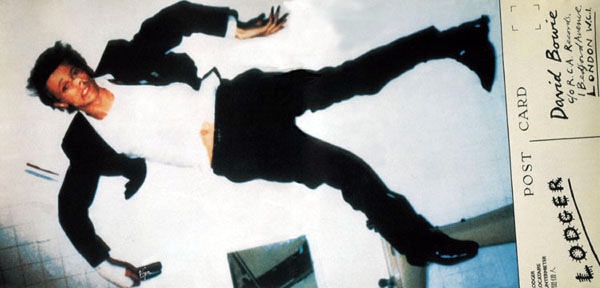
Thus, being able to change was important, but there had to be balance and as a teacher, I had to learn this. I could go too far out and be unstructured in my lessons like the Major Tom character who was lost in space or the lad insane or Ziggy Stardust who was too coked up to think straight and my students would take over the class without me having too much influence. I could be too detached and alienated and machine-like, as seen in The Thin White Duke or many of the characters on Low, Heroes, and Lodger (The Berlin Trilogy) of the late 70s and I would not connect with my students. I could be too uncreative and uninspired and just rely on old ways of teaching the same books like Bowie did in the 1980s and my students would be bored and uninspired, too. Thus, I had to find my own voice as a teacher and not rely on the characters that I could create much like Bowie did. I could be whatever way I wanted to be in the classroom, but if I was not real or at least somewhat authentic, empathetic, present, listening, open to dialogue and just standing up there acting, lecturing, and being a specialist who knew it all, then the jam session would never get started.
Bowie taught me how to jam by showing that we need to be able to discuss new ideas and get out of our comfort zones as we are always changing and inhabiting different subject positions due to the plasticity of identity, but he also taught me about being too extreme and not balancing the Dionysian with the Apollonian. For one to overcome modernist binaries, one cannot be stuck in only one way of thinking. One has to know theory and structure, but one also has to be able to flow and move it around in all kinds of ways while still being passionate. I think it was Bowie’s voice that hooked me, though - it was the beginning and the end and the middle - and I still have not heard another performer or artist or vocalist who has moved me as much as he has. But most of all, he inspired me to change by understanding change through listening to new kinds of music that might open space for a transformative experience to take place. I understand this transformation because without Bowie calling out to me after a gig in the early 1980’s, I might not have been a teacher and you would not be reading this paper…
References
Buckley, D. (2004). David Bowie: The complete guide to his music. New York: Omnibus Press.
Czech, M. (2012). Jamming as a way of being: Greatest hits: (Volume one). Unpublished manuscript, Georgia Southern University.
Gracyk, T. (2001). I wanna be me: Rock music and the politics of identity. Philadelphia, PA: Temple University Press.
Pegg, N. (2004). The complete David Bowie. London: Reynolds & Hearn Ltd.
Perone, J.E. (2007). The words and music of David Bowie. Westport, CT: Praeger Publishers.
Sanford, C. (1998). Bowie: Loving the alien. New York: Da Capo Press.
Spitz, M. (2009). Bowie: A biography. New York: Crown Publishing Group.
Surber, J. O. (2009). "Why we listen to Led Zeppelin, really" in S. Calef (Ed.), Led Zeppelin and philosophy: All will be revealed. Chicago, IL: Open Court Publishing.
Thompson, D. (2006). Hallo spaceboy: The rebirth of David Bowie. Toronto, Ontario, Canada: ECW Press.
Thompson, D. (2010). Children of the revolution: The Glam Rock story 1970-75. London: Cherry Red Books.
Trynka, P. (2011). David Bowie: Starman. New York: Little, Brown, & Company.
Wilcken, H. (2005). Low. New York: Continuum.
Willis,. P. (1977). Learning to labor. New York: Columbia University Press.
Copyright 2012 by Somebody's Webpage







